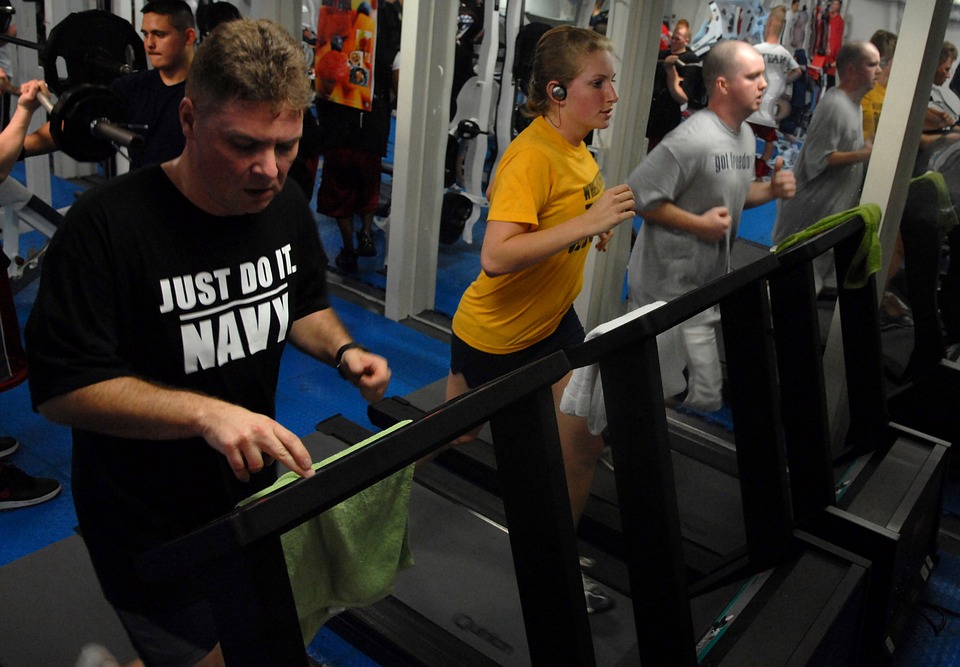Only around 50 years ago, exercise was thought of as a fun. It was done for enjoyment and as a way to improve health.
This thought process followed that of the Ancient Greeks who exercised and played sports for the same reasons. Pride was taken in building and maintaining as healthy as mind and body as possible.
In fact, it was an Ancient Greek doctor who first started looking into exercise as a means of improving health and treating illness and injury.
Nowadays though, exercise and nutrition is often thought of as means to an end. Many people see exercise as a drag, a punishment, or a chore. It’s something to be done to improve their appearance or capability.
As useful as some of these viewpoints are for motivation, they’ve come at a cost to the fitness industry.
Almost every fitness business now excessively promote results. More importantly, they promote the speed of their results. This is true of gyms, personal training studios, and even equipment and nutritional products like protein bars and powders.
8-week challenges have become 6-week challenges, which have become 4-week challenges. Quicker results have become indicative of a better service or product.
There has even been an emergence of calorie challenges. These are extreme challenges where high calories are taken in through overeating and burned through excessive exercise.
Trainers, equipment and supplements are all primarily judged by how fast they can work. This is opposed to how well they work long-term. Despite this emphasis on speed, a lack of time is ironically cited as one of the main barriers to exercise.
There is almost no point in asking if this approach is working. Obesity has consistently risen and a lack of exercise is now a leading cause of disease and death. The only remaining question worth asking is can it work?
How fast can someone lose fat and gain muscle?
How quickly can stopping exercise or overeating for short periods cause you to lose progress?
Are 4-week, 6-week, or 8-week challenges really what they’re advertised?
Below, we take a look at how quickly you can gain, or lose, muscle and fat. This can help you manage expectations and identify scams in the fitness industry.
Table of Contents
How Fast Can You Gain or Lose Muscle and Fat
One of the biggest questions asked by those hiring trainers or starting a diet is, “how quickly will I see results?”
Yet, not many have turned to research to answer this question. This is despite a relatively high amount of studies done trying to answer it.
Exercise and nutrition scientists have studied the maximum rate of fat gain and loss. The same is true of muscle growth and loss.
Before looking at what these studies found, it should be noted that highly trained athletes can often see different results than newcomers to exercise. The same is true of men and women. This is due to a number of factors that could fill an article in itself.
Nevertheless, these differences deserve mention when looking at the above effects of muscle and fat changes with exercise and nutrition. It also should be mentioned that we’re talking about the average person. There will always be exceptions to the rule.
But, it’s better if you act as if you’re not genetically gifted and be pleasantly surprised than the other way around.
Chasing gains: How fast can you gain muscle?
This is probably the hardest questions of them all to answer. Muscle largely grows in line with the quantity, and quality, of the training it’s given.
Naturally, this means that results will differ among individuals. That said, the highest reported gains in muscle size due to training in one study indicated an average increase of up to around 25% in men and around 20% in women. But, the highest individual result reported went as high as a 59% increase in muscle size!
This was after 12 weeks of training, equating to an average of 1.7% to 2% gain in muscle size per week at most, or just under a 5% gain at a stretch.
But, keep in mind these changes were found in those in the group with the best genetics. The average stood at roughly 20% for men and 18% for women.
Once again, there are still issues with the above research. Not only was the study done with only one arm using bicep curls, it was also done with untrained people.
So, it’s hard to know if more experienced athletes would see these results. It’s also tough to know if different exercises or programs would give different results.
This means that this is one area that fitness service and product providers will likely be able to compete with each other over for a long time to come.
Out training a bad diet: How fast can you gain fat?
This question is a lot easier to answer. All researchers have to do is find out how much energy a person needs to take in through their food to maintain weight. Then, all they have to do is overfeed these people as much as possible without letting them do any exercise.
Alternatively, you can simply observe people who are trying to gain as much fat as possible already.
This is exactly what researchers did in a study looking at members of a tribe going through a fattening season, where tribesmen try to gain as much fat as possible. This is done to prepare for famine. Their practices for this include eating up to 8,742 calories per day, working and resting.
Tribesmen were shown to gain up to around 16 kilograms of fat over a period of 65 days. That equates to a gain of 1.7 kilograms of fat per week. This roughly fits with other studies looking at maximal rates of fat production when eating more food than needed.
Again though, this is an extreme. The tribesmen above have been carrying out their fattening rituals for generations.
So, their is likely a genetic element to their rapid fat gain. Also, it’s very tough to eat the amount of calories above. In fact, the tribesmen above often have to take time off from eating to vomit throughout the day. Nice, right?
Back to square one: How fast can you lose muscle?
This is an interesting question, and one that’s been studied more than any of the others. The loss of muscle due to inactivity is known as “detraining” or “atrophy.” Detraining can also mean the loss of any fitness attribute, like endurance or speed. Meanwhile, atrophy literally means the loss of muscle mass.
The loss of gains is one of the biggest complaints of bodybuilders or athletes on a break. But, how quick does it actually happen?
Not that quickly actually. One study found a break of up to 3 weeks didn’t significantly affect muscle mass.
But, what about the guys who say they can actually see themselves getting smaller?
They’re right. They are getting smaller. But not due to muscle loss.
Muscles contain glycogen. This is sugar that the muscle uses for energy during intense exercise. This glycogen also holds on to a lot of water. 3 grams of water for every 1 gram of glycogen to be exact.
Exercise increases the amount of glycogen your muscle stores. So, when you stop exercising, these stores drop. This means a drop in water weight and muscle swelling. So, while you may appear smaller, you haven’t lost any muscle.
This is actually a big reason low-carbohydrate diets work. You cut out carbohydrates, which reduces the glycogen and sugar in your body and the water it holds on to. You lose weight and think the diet is working.
It’s also the reason weightlifters and boxers can cut up to around 6% bodyweight in a matter of days. It’s mostly water weight.
So, what’s the fastest someone could lose muscle?
Assuming you were actively trying to reduce muscle mass by doing things like ultra-endurance training and starving yourself, a good estimate from this study would be just over 1 kilogram per week.
But, if like most, you’re just worried about taking a break from training, don’t be. You’ll be fine.
The only exception would be elite level (think, Olympics) athletes. Because these athletes are trying to reach the absolute peak of their potential, it will be easier for them to lose progress. Again though, this loss will not be huge and can be regained quicker than originally gained.
Abs are made in the kitchen: How fast can you lose fat?
Like how quickly you can gain fat, this is also a relatively easy question to answer. Again, all you need to do is create a severe pack of energy. This would be done through cutting out enough food to require the body to burn as much fat as possible.
This is the basis of pretty much every successful diet for weight loss, use more energy than you take in. The greater the energy reduction, the greater the weight loss. So, the easiest way to find the quickest rate of fat loss is complete starvation. Combining it with exercise would then give you the absolute maximum amount of fat a person could burn in a given period.
Believe it or not, this has actually been studied.
The Minnesota Starvation Project looked at how starvation mixed with physical activity could affect the body. They cut calories of subjects to the bare minimum (around 1,500 calories daily) for 6 months. The subjects also had to carry out daily physical activity.
What did they find?
Again, results were somewhat individual. But, fat loss occurred at a rate of just over a quarter of a kilogram per week. Yeah, a quarter of a kilogram per week.
But, what if I just train really hard?
Yeah, that’s kind of the idea of some emerging calorie challenges. Thing is, the body also has a cap on how many calories it’ll let you burn in a day. If you try torching calories in an extreme training session, your body simply tones down the amount of calories you burn afterwards. These are calories you burn unconsciously through the day by fidgeting or moving around.
In fact, one of the highest recorded calories burned was around 11,000 calories per day during a high altitude arctic trek. But, this was also by an ultra-endurance athlete who was an outlier. The average was closer to 4,860 calories per day.
Keep in mind that, like the above examples, these were extreme approaches that was barely sustainable by those who were forced to do it in the studies. It’s certainly not a good approach for those looking to get healthier.
Many of these subjects knowingly risked their life and health in both the short, and long-term. The arctic trekker above actually fell to a dangerously low level of body fat and lost excessive weight.
A lot of the Minnesota Starvation Project subjects experienced mental health issues during and after the experiment. So, it’s not a good template for those just looking to get beach-ready.
In Summary…
While this article may have seemed like a good look into physiology and science, it has more practical value that you might think. By knowing the above, it should help you make better decisions in an industry that is becoming more and more hell-bent on quick fixes.
This should then help you be more consistent with your exercise and be less hard on yourself if you don’t follow your program to the letter.
Overall, if you take anything away from this article, take away the following:
- Exceptional results from a product or service is likely due to genetics or marketing than the product or service. So, if you find one of them works better for you, it’s probably due to your genes or other factors like enjoyment and motivation.
- Looking smaller is not the same as having lost muscle mass. I actually takes quite a bit of time to lose substantial progress. So, short breaks of up to a month shouldn’t concern you.
- There is a limit on how much fat you can gain in a day or week. So, having a bad diet day or week is no reason to despair. It likely won’t impact your results at all.
- There is also a limit on how much fat you can lose in a week or month. So, don’t confuse quick weight loss with fat loss. There’s only so much you can lose without starving yourself. Great transformations are often a combination of marketing, good lighting, and water loss. True transformations happen with consistency and gradual change.
- Obesity and inactivity are now one of the leaders of death and disease. So, doing anything is better than doing nothing. There’s also nothing wrong with experimenting until you find an activity you enjoy.







